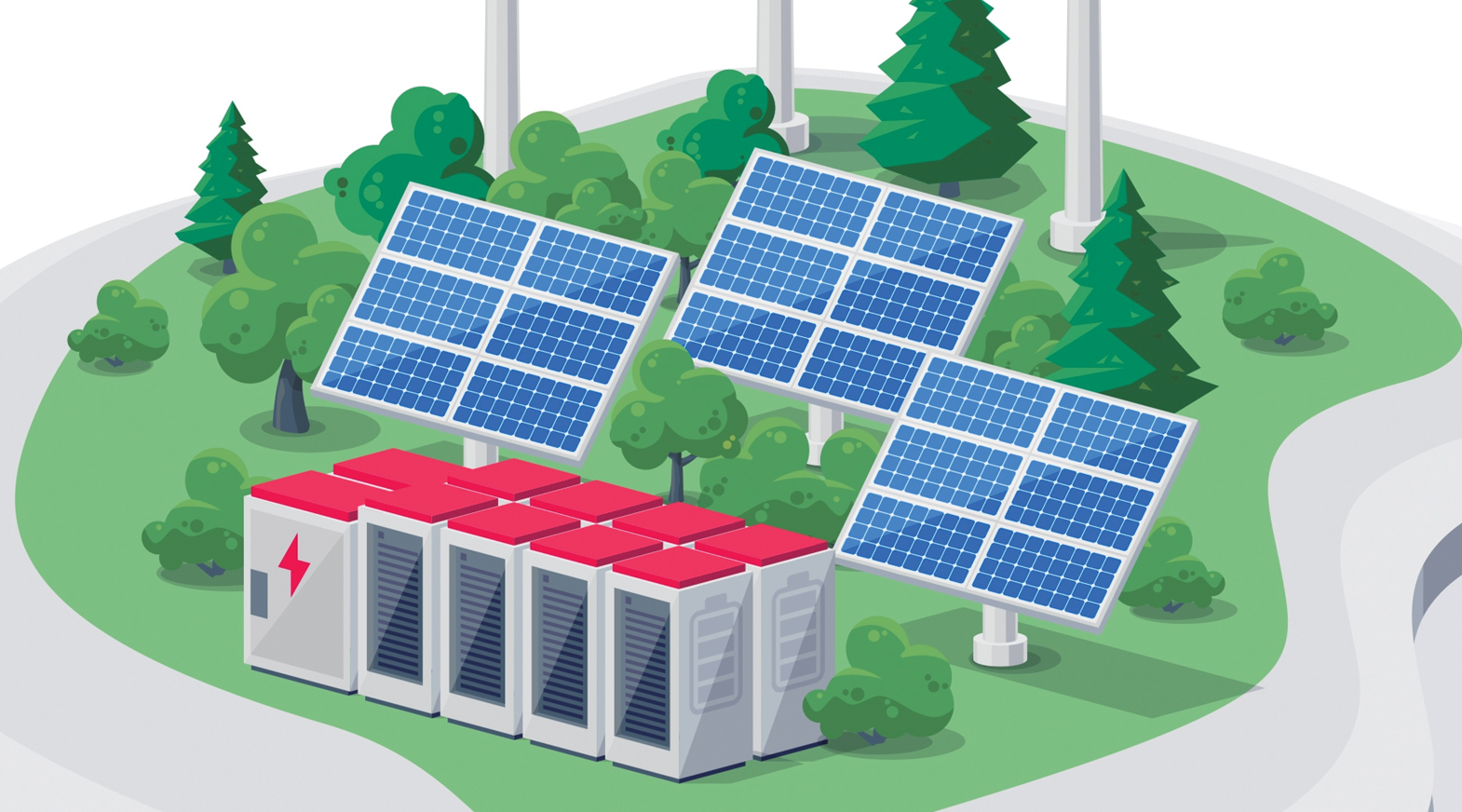While the sun shines...
-
- from Shaastra :: vol 01 edition 02 :: Jul - Aug 2021

For India to realise its solar power ambitions, it must rethink issues across the grid - from pricing to regulation to innovation.
Solar power, specifically photovoltaic (PV) energy, is the cheapest solution for new builds in most countries. India has aggressive solar ambitions, aiming to raise solar generation to 100 GW by 2022 and 280 GW by 2030, but in 2021, we are still less than halfway there. The challenge isn't simply in finding funds to build capacity, but in figuring out other issues. Where does solar fit in our portfolio? What are the employment and import implications? What does this mean for consumers? Until we plan these, we may coast along a global price curve and buy ourselves a few years of growth, but we risk facing a wall in the mid-2020s when we can no longer absorb intermittent or variable RE: solar without storage.
Let's work backwards. Who wants solar? Solar is installed at two levels. First, we have grid-scale builds where the buyer is the distribution company (discom) or utility. Alternatively, an end-user like a factory or a household may set up solar if the economics seem attractive.
THE PRICE SIGNAL
One challenge is that we don't price or otherwise signal for electricity by characteristics like time of day (ToD). For decades, India faced power shortages, and “more” was the answer to all problems. Now, we are no longer in deficit in generation capacity, but must meet demand at all periods – and at the right price. If the grid peaks in the evening, when solar output is zero, adding new solar capacity doesn't help. However, adding a new coal plant as a peaker isn't optimal either.
For most end-users, the economics are attractive only because they compare solar power cost (generation) with the retail price, which includes the costs of distribution (last-mile connectivity) plus redundancy. It's not an apples-to-apples comparison. Plus, consumer pricing is skewed: larger homes and commercial/industrial users pay higher rates, and cross-subsidise others. This skews incentives, and begs the question: why do we have 30% capital subsidies for homes? It's the rich who typically install solar systems.
We need a revamp of the entire power system to give retail consumers an incentive to change their consumption patterns.
Most end-users will not disconnect from the grid when they add solar; storage is too expensive today. In fact, they will get back on the grid in the evening, when demand peaks. Today's pricing schemes don't reflect this. States are grappling with how to price surplus solar coming from homes or shops at mid-day, when demand is low. Under 'net metering', feeds to the grid were priced the same as the retail tariff, but this doesn't scale for the rest of the system. Now, there are moves to lower solar feed-in prices, but these will reduce the attractiveness of solar power. However, for the utility, this makes sense: if it wanted to encourage solar, it can get a solar farm at around ₹2/kWh, while the retail price for bigger users might be ₹8-10/kWh.
At a grid scale, the challenges are higher. In the short run, we can absorb solar without storage, by lowering output from the existing (mostly coal) plants, but there is a limit to this. We've pushed up system-level costs elsewhere. But the reality remains: as the share of RE rises, its marginal value declines and its marginal cost of integration rises. ToD issues will become critical just as we begin to exhaust our surplus generation capacity, and need to meet peak demand.
We're also importing most of our solar cells, especially from China. The government supports domestic manufacturing, but there's another consideration. The coal sector provides tens of millions of jobs. With solar, beyond manufacturing, employment is typically at the low-end, for maintenance.
360-DEGREE INNOVATION
India has had limited success in R&D, more so with large-scale manufacturing. We need to innovate for volume, but we also need more fundamental R&D for technologies that are cost-effective and better suited for Indian climatic conditions. Panels must be easier to install and maintain, with integrated designs. For starters, garages and parking spots should design for not just rooftop PV, but proper electric vehicles (EV) connections.
Innovation isn't just about new technology: it's needed across the ecosystem, including regulatory and business models. We need a revamp of the power system, including the pricing mechanism, to give retail consumers an incentive to change their consumption patterns. Someday soon, mid-day electricity may become dirt cheap, when the sun shines bright. How much can we shift our loads, especially cooling, to this period, perhaps also with pre-cooling and thermal storage solutions? With smart meters and smart appliances, we can also shift other loads. Lastly, EVs represent another challenge: if we charge them overnight, the swing producer will not be solar, but coal.
Technology like edge-based solutions, storage, peer-to-peer supply, EVs, and digitalisation can unleash a brave new world, where consumers can become producers, and where ‘smarts' has a value, for the end-user and the system. To reach the potential, we must stop treating electricity like a gross commodity or a fruit basket, valued in ₹/kg or ₹/kWh. Just as there are mangos, bananas, lychees, and so on, this ‘basket' includes different fuels with different characteristics and prices. Solar is critical, but it cannot operate only with a supply-side lens. We eventually need to move towards a services model, with a focus on quality and safety, and provide an incentive to save energy, not just build more solar panels.
Have a
story idea?
Tell us.
Do you have a recent research paper or an idea for a science/technology-themed article that you'd like to tell us about?
GET IN TOUCH















